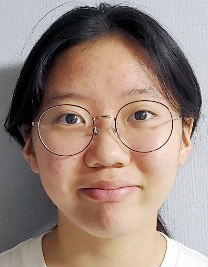If someone were to ask a Korean what sports Koreans “traditionally” excel at, many would name soccer, baseball, or, these days, volleyball. One sport that is often overlooked is fencing: many are surprised when told that Korea has produced many world champions, such as Kim Jung-hwan and Gu Bon-gil. Korean fencers have proved their capability are on par with global standards over the years by winning gold medals at multiple international competitions, such as at the London 2012 Summer Olympics (men’s sabre team).
Once I discovered this fact, I began to wonder how Koreans became world-class fencers despite many disadvantages, such as being physically weaker than athletes from Europe. To gain further insight, I decided to seek a professional’s explanation.
Since I am an amateur fencer (I have fenced for two years), I decided to interview my coach, Kim Chan-hak, who has been playing and coaching fencing his entire life. He is the owner of Leader’s Fencing Club, which was established in 2006 and is one of the first fencing academies in Korea. When not coaching, Kim writes books about the history and techniques of fencing. His first book is ‘Fencing Academy - The most romantic & graceful of sports’ - (Seoul: Penreeve, 2013)

At the start of the interview, Kim stated his personal opinion on why he believes that Koreans excel at fencing. He mentioned many qualities, such as player’s concentration and speed, and stressed that Koreans are able to play at a high level of speed because they have a smaller and slimmer build compared to Caucasians. While recognizing the fact that these two qualities are not specific to Koreans, Kim said that they are the main qualities that Korean fencers are most known for.

Kim also spent a lot of time discussing the future of Korean fencing. Kim admitted that Korea is currently in its golden age, with fencers such as Oh Sang-uk and Gu Bon-gil dominating global sabre fencing rankings. He further explained that although Korea is best known for sabre fencing, it also excels in épée and foil fencing. Kim stressed that Korea has a “bright future ahead” and has the potential to dominate épée and foil fencing in addition to its traditional strength in sabre fencing.
Kim provided another reason for the ‘bright future’ of Korean fencing: the increasing number of fencing clubs that are open to the public. He recalled that when fencing first came into Korea around the 1950s, fencing clubs could only be accessed by those who wanted to represent Korea as professional athletes. However, since the early 2000s, clubs in Seoul and Gyeonggi-do have slowly started to open up to people who want to pursue the sport as a hobby.
Kim explains that ever since fencing was introduced to Korea, it has slowly but surely gained popularity and recognition. He believes that these numbers will continue to grow due to two reasons: 1) the fact that many are finding out about the health benefits of fencing and 2) that current fencers are encouraging new people to join the athlete pool.
Kim further added that, although fencing may look like an “easy” sport, it actually requires very concentrated use of the legs as well as core and arm muscles. He pointed out that this allows the fencer to not only burn a significant number of calories but also create endurance.
Although Korean fencing is currently under-recognized by the general public, it is slowly gaining more attention due to the noteworthy accomplishments of young athletes. In a few years, fencing might just become as widely popular as soccer and baseball.

Hyunsung Lee - Julie Lee
Grade 10
Korean International School

